Hiroshima – 0815am August 6th, 1945 (Japan)
In the early hours of August 6, 1945, Colonel Paul Tibbets and his crew set off from Tinian Island in the West Pacific. Piloting the Enola Gay (named after his mother), they were heading for Japan On board they carried a nuclear bomb code-named “Little Boy”.
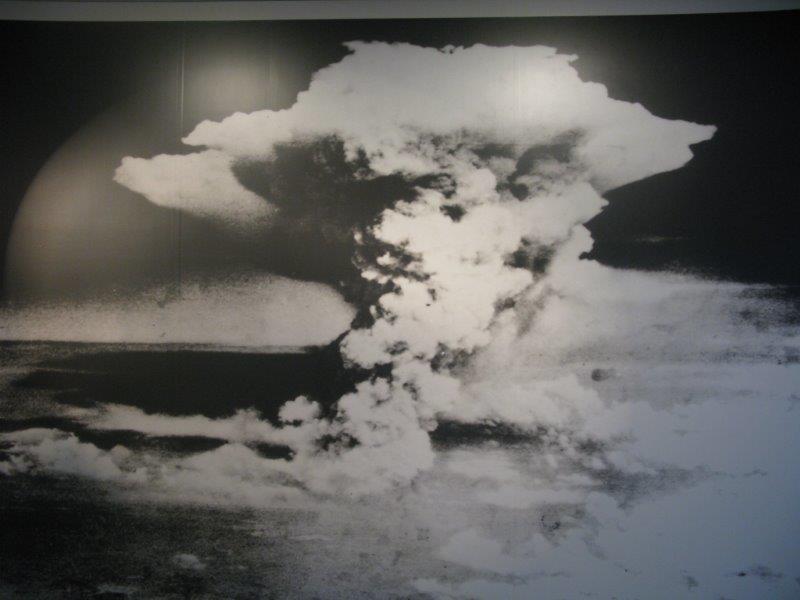
Its destination was Hiroshima. It was a beautiful sunny morning and at 08.00am an earlier air raid alert had been lifted. People were simply getting on with their normal lives. At 08.15 Little Boy was released taking 43 seconds before it hits its target. By then the Enola Gay was 11.5 miles away and 30% of Hiroshimas residents totalling between 70-80,000 people were dead

No where is this more poignantly illustrated than the remains of the Atomic Dome.
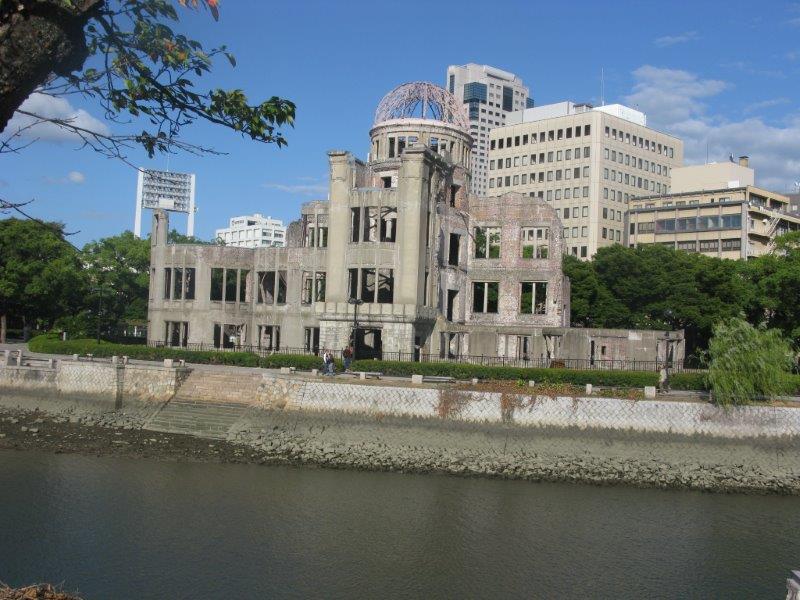
The museum was established in 1955 – 10 years after the atomic bombing and is located in the center of the Hiroshima Peace Park. While it sets out to inform and educate people of the tragic events of August 6th, 1945 the museums aim is also to contribute to the dismantling of nuclear weapons and to promote worldwide peace.
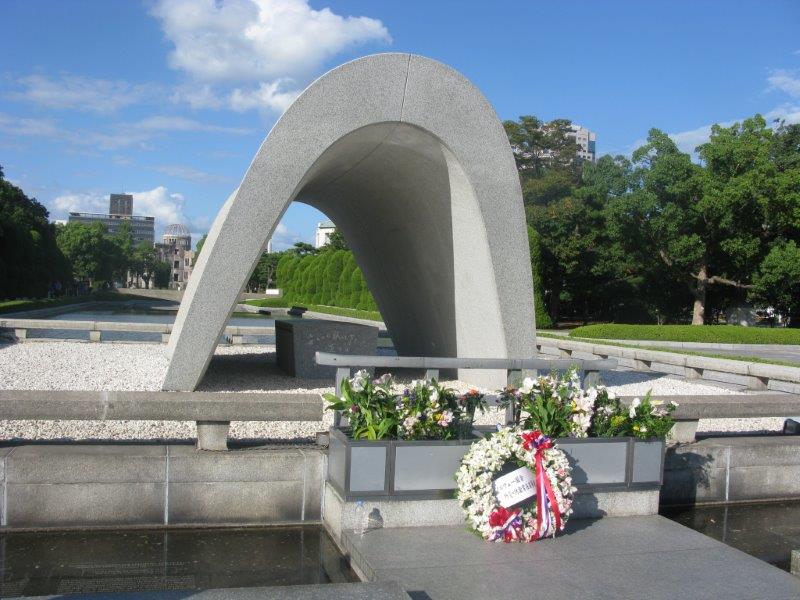
There is a token entrance fee and for an extra fee you can purchase an audio guide. I spent a good two hours (you certainly need that amount of time) at the museum to work my way round several exhibit halls. These offer a huge amount of information, with exhibits which were both both horrific and poignant. This watch had stopped at 08.15 – the exact time the bomb fell.
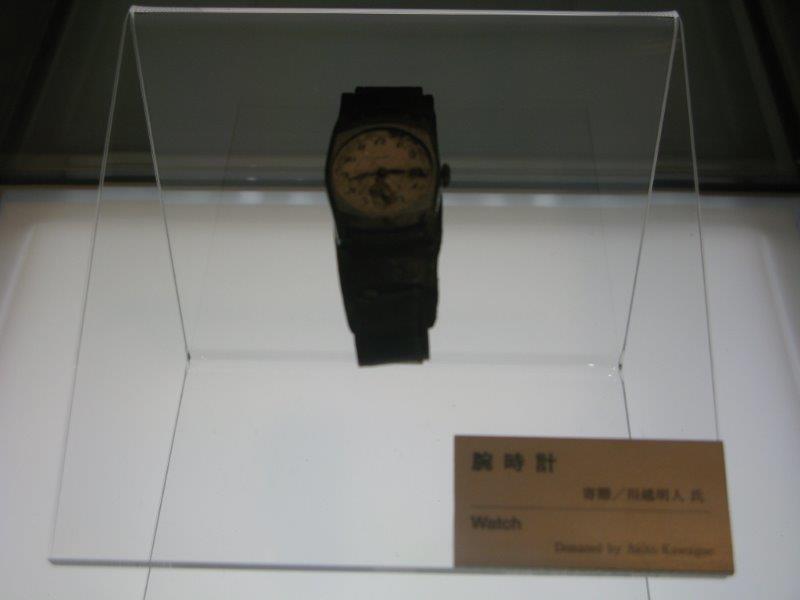
Sadako Sasaki and the 1000 cranes
Perhaps one of the most heart wrenching tales to come out of Hiroshima was that of Sadako Sasaki. She was only two years old in 1945. By all accounts it seemed she had suffered no ill effects from the bombing and went on to lead a normal life. At the age of 12 she was diagnosed with radiation related leukemia. A friend who visited her one day in hospital folded a golden piece of paper into a crane.
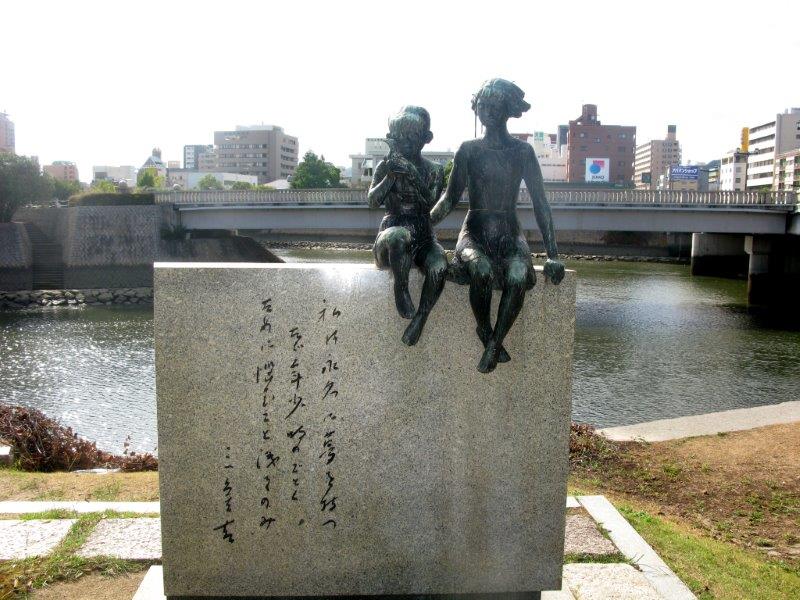
From here on Sadako attempted to fold 1000 paper cranes in an attempt to save her life. This came from a Japanese story that said he who folds 1000 will be granted a wish. Hers was to live.
It was all in vain and by the time Sadako died she had only folded 644. Her friends took up the task on her behalf and by the time she was buried 1000 paper cranes were buried along with her. Her friends published a collection of letters to raise money for a memorial to Sadako and for all the children that had died from the effects of the bombing. The memorial in Hiroshima National Peace Park is dedicated to Sadako and all the children who lost their lives from the bombing. It shows a crane held high by Sadako.
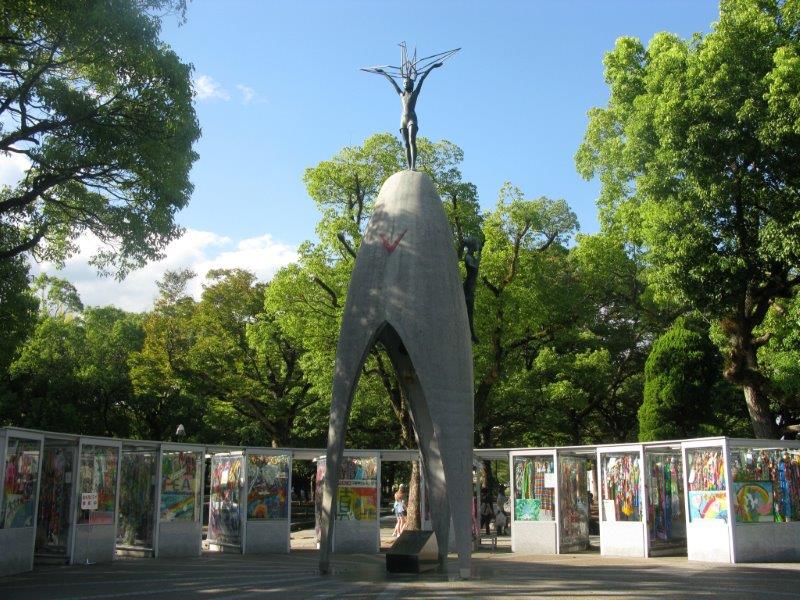
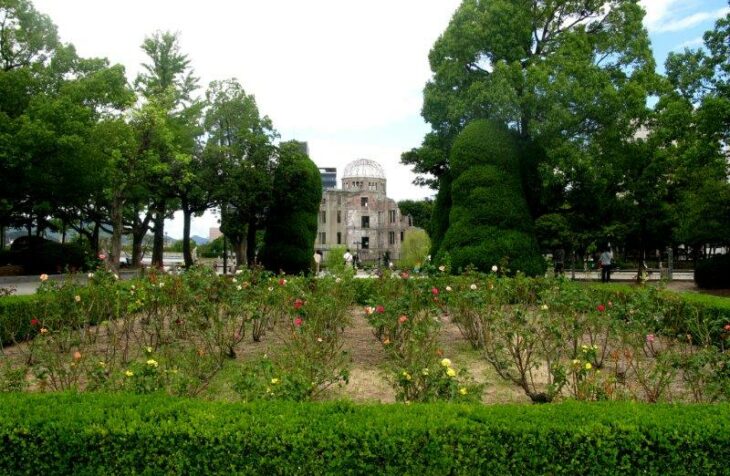
 Tiny Teddy
Tiny Teddy